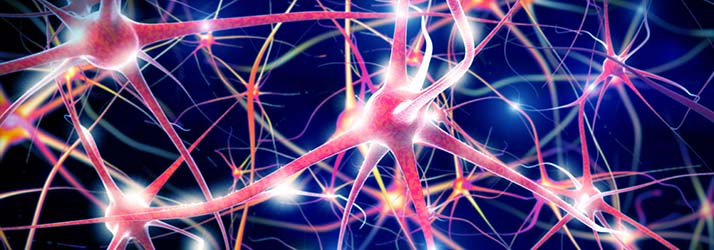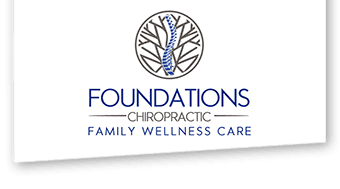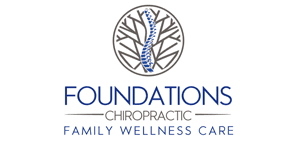Our Scanning Technology (CLA Insight) in Zionsville

The nervous system is the most important system in the body.
It controls our normal balance and regulates all body functions.
But how do you check to see if your nervous system is healthy in Zionsville?
You can't see your brain or your nerves on an x-ray. And there aren't really labs that directly tell you how your nervous system is functioning on a daily basis.
As Chiropractors, one of the best ways that we've found to assess the nervous system for stress is with our CLA Insight scanning technology.
Nervous System Functions in Zionsville
The first thing that we need to understand before we talk about assessing the nervous system is that our brain and nerves work as our own "supercomputer". Messages are sent from the brain to the body and from the body back to the brain to be interpreted. This process is happening 24/7, 365 days a year with and without you even knowing it. When you are sleeping your brain is still in constant communication with your body even though you are not consciously aware of it.
The nervous system has 2 main actions - it tells our body what to do, and it senses what we're experiencing in our environment. The sensory portion of the nervous system makes up about 10% and the function portion makes up about 90%! This means that only 10% of our nervous system deals with sensation or what we're feeling. This is important because even though pain or discomfort is an indication that something is wrong, it's likely that there was a functional problem before you even started feeling it.
What we love about our scans is they help us identify areas of dysfunction in your spine + nervous system before you may even realize there's an issue.
So how does it do that?
Our Technology
One of the scans that we use is called a Surface EMG. This scan examines the motor function of our nervous system, or how our muscles are reacting/functioning. This gives us important information about what muscles or groups of muscles are stuck in chronic contraction (muscle knots/tightness). This also helps us evaluate how much energy and motor-neural activity is being spent just to keep us upright in our normal posture. If you have poor posture your muscles are having to work overtime against gravity in order to keep you in an upright standing or sitting position. Posture plays a huge role in our muscle's energy consumption and this scan helps us assess just that.
The second scan that we use is called Thermography. This scan examines how well our bodies are able to regulate themselves. One thing our body regulates is our body temp. Just like the thermostat in our house, if it's too warm the AC will kick in but if it's too cold the heat will turn on until the desired temperature is attained. Our bodies are able to do the same thing by increasing or decreasing blood flow to an area in order to heat up or cool down. In an ideal world, on either side of your spine, you would expect to see the exact same temperature. This would be an indication that your nervous system is communicating correctly and you are able to adapt to your environment. But, if there is an area that is under stress there will be a temperature differential showing that, at some level, the nerves are not able to communicate properly to have normal regulation. This scan helps us assess how your nervous system is functioning at different levels of your spine.
The third scan that we use is called Heart Rate Variability (HRV). This allows us to see how stress is directly impacting you. Not to be confused with regular heart rate - HRV looks at how your heart rate varies over time. It may seem counterintuitive, but a variable heart rate at rest tells us our nervous system is functioning well and is balanced! If your heart rate doesn't vary much over time, it can indicate that your body is stuck in a stress response. If you see a tiger (probably not likely in central Indiana) you want your heart rate to skyrocket! You need to be able to fight or run away immediately. When that stressor is gone we want to be able to return to a state of calmness with a lower heart rate. If our nervous system senses a threat, it keeps our bodies on high alert. If there is a chronic stressor (like a subluxated joint) our bodies get stuck in a stressed state and the variability of our heart rate variability is lower.
Ideal Conditions for your Nervous System
When we are in a calm, rested state we will have more of a variability to your heart rate because it may change based on your thoughts or subtle changes in your environment. In a rested state, our nervous system is better able to react and accommodate to everything in its environment when it's not in a constant state of alert. We want there to be a proper balance between having a high and lower heart rate so having a higher heart rate variability means that you are better able to regulate to whatever environment you're in.
This can get confusing, so to simply sum it up, the goal is to have a higher HRV
In our office, we will do these scans at every re-examination to evaluate how your body and nervous systems respond to care. An incredible array of changes occur functionally and neurologically when undergoing Chiropractic care. (From CLA-insight)
- The overall balance and capacity of the patient's unconscious nervous system improves (your body regulating heart rate, breathing, digestion etc).
- The patient spends much less motor-neural activity to maintain their postures. (Easier for muscles to maintain proper posture)
- The patient moves with greater freedom and efficiency.
- The organs and glands operate with greater control when the unconscious nerves function more efficiently.
- Learn, think and socialize at an accelerated pace as they process their environment more completely and with greater ease.
Chiropractic care is not only for getting out of pain or discomfort but is intended to help our overall wellness by making sure our brain-body connection is functioning optimally.
These scans give us a look at what your nervous system is doing and how we can help you better function and cope with the chronic stressors that we have in our lives. These three scans then become incorporated into a "core score" which is similar to a report card. It gives us a tangible number that we will track and allows us to see what areas of your health we need to work on in order to reach our goals of being healthy and expressing true wellness which we were all intended to reach.

About the Author
Dr. Ben Hennes decided to become a Chiropractor after seeking care for low back pain and migraines that were making it hard for him to focus on his studies. After a few visits to a Chiropractor, he was no longer having issues with his lower back or migraines and loved how he felt.
Improving health from the inside out in such a natural way made sense for Dr. Ben and he fell in love with the philosophy of Chiropractic.
In his free time, you can find Dr. Ben in the outdoors - hunting, fishing, and exploring. If he isn’t outside he enjoys expanding his knowledge by reading and listening to podcasts.
OFFICE HOURS
Monday
8:30am - 12:00pm
2:30pm - 6:30pm
Tuesday
2:30pm - 6:30pm
Wednesday
8:30am - 12:00pm
2:30pm - 6:30pm
Thursday
2:30pm - 6:30pm
Friday
8:30am - 12:00pm
Saturday & Sunday
Closed
Foundations Chiropractic
7625 West Stonegate Drive Suite 100
Zionsville, IN 46077



